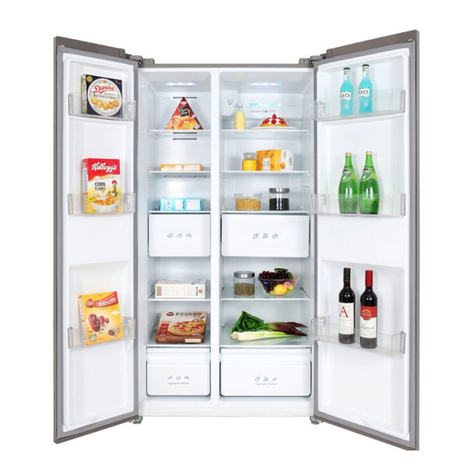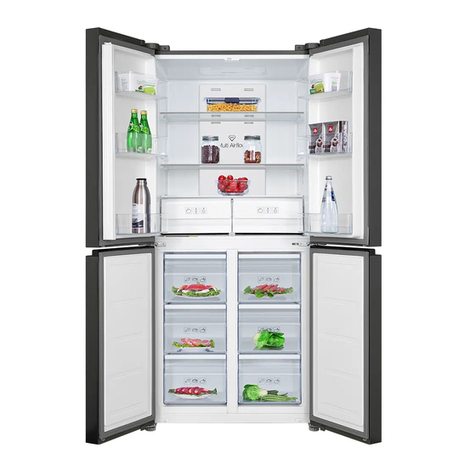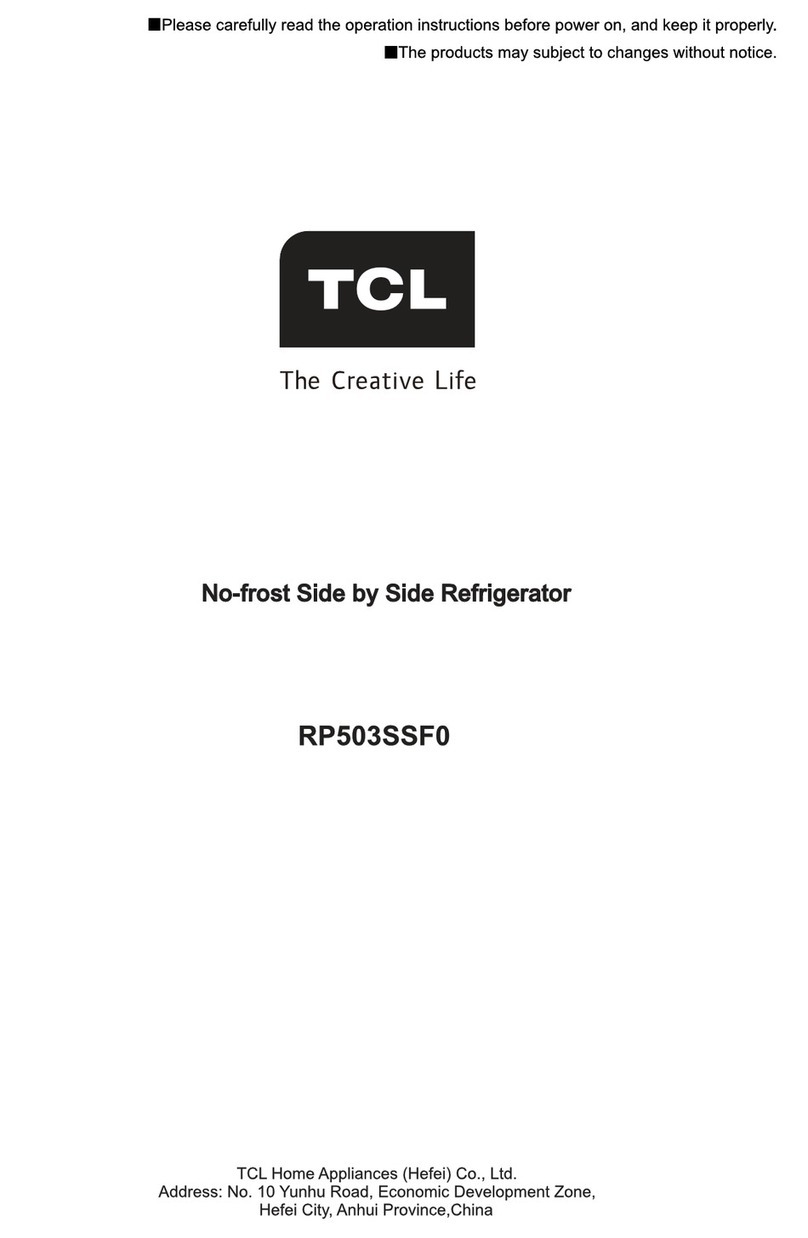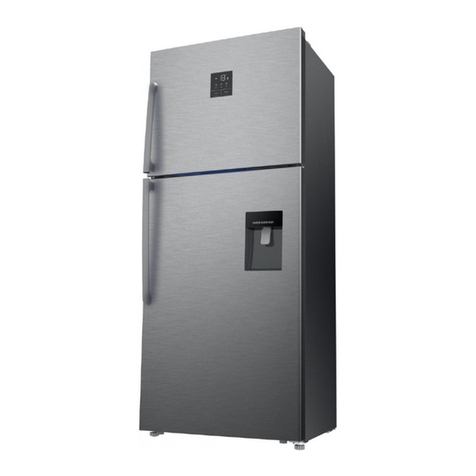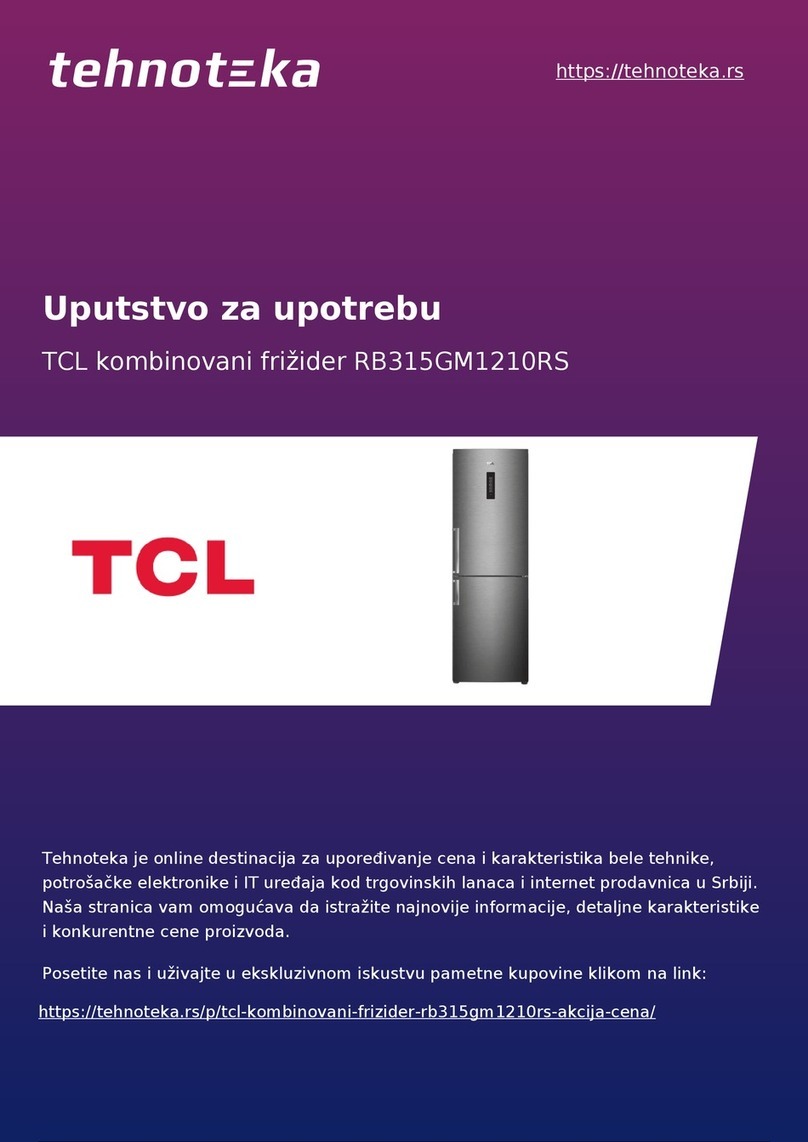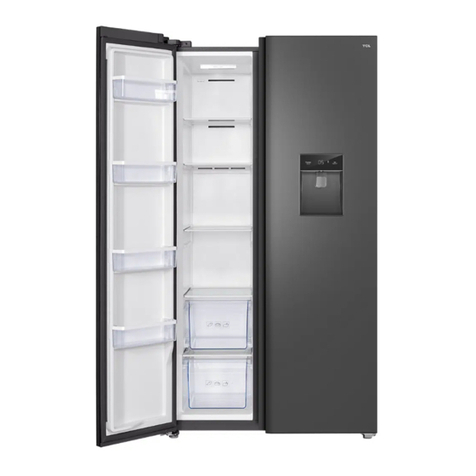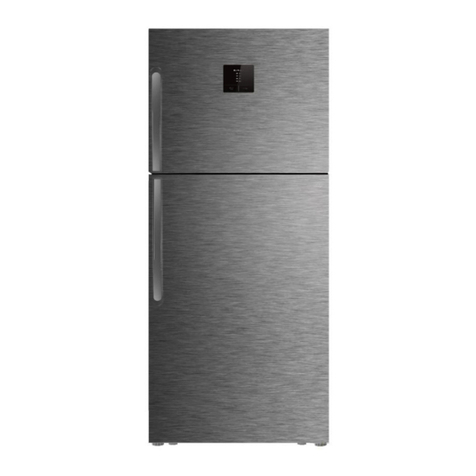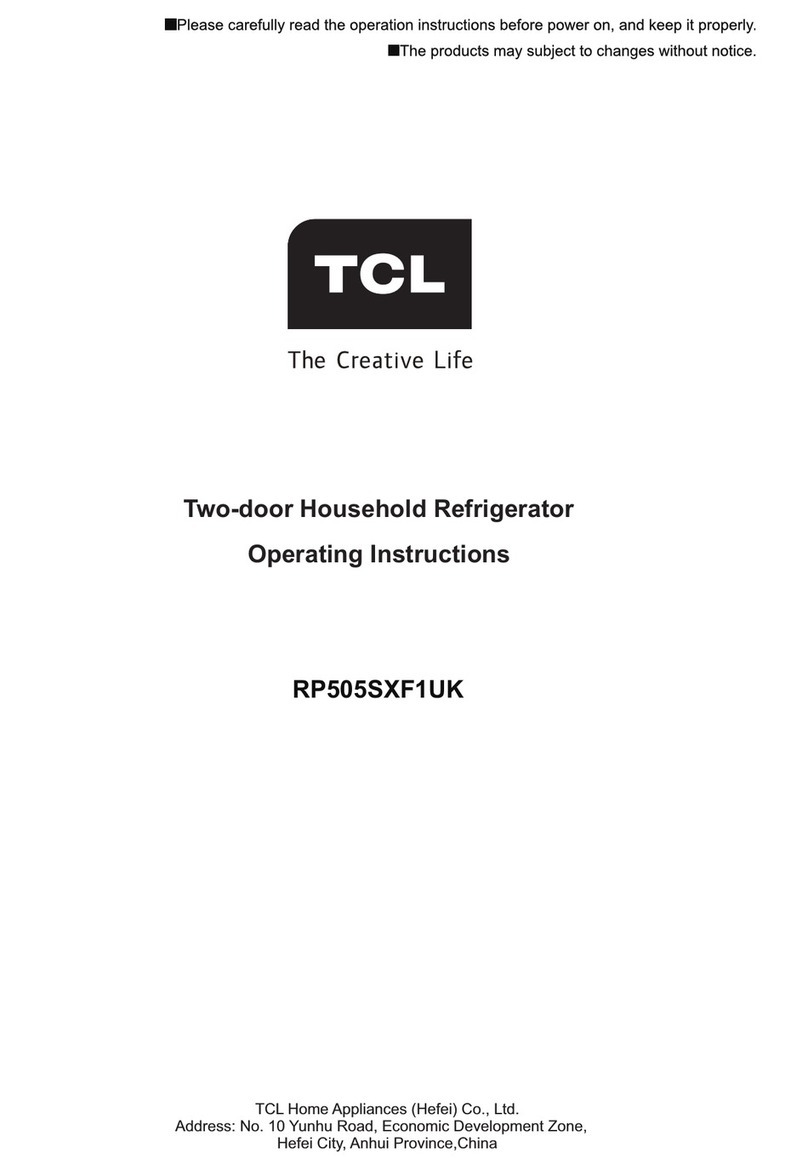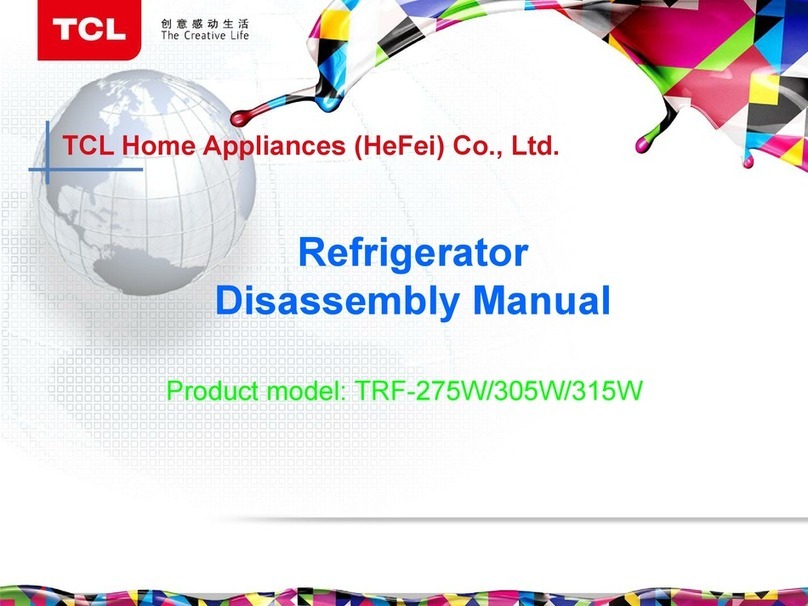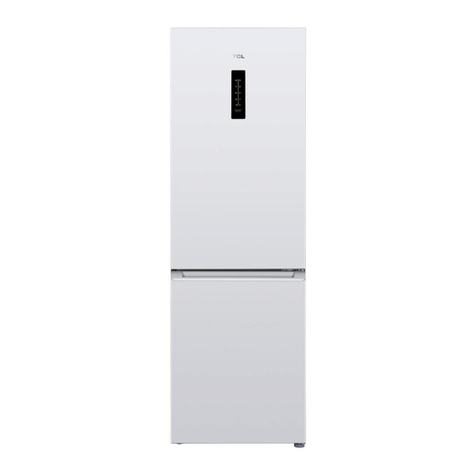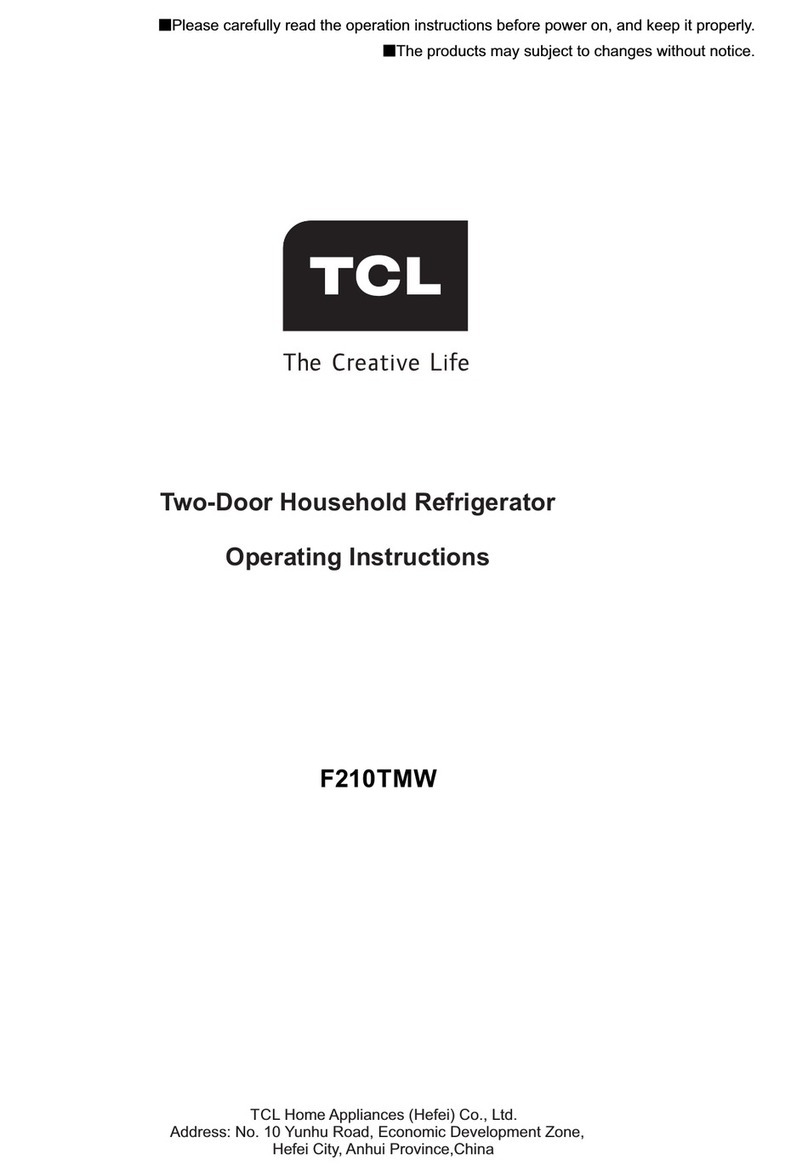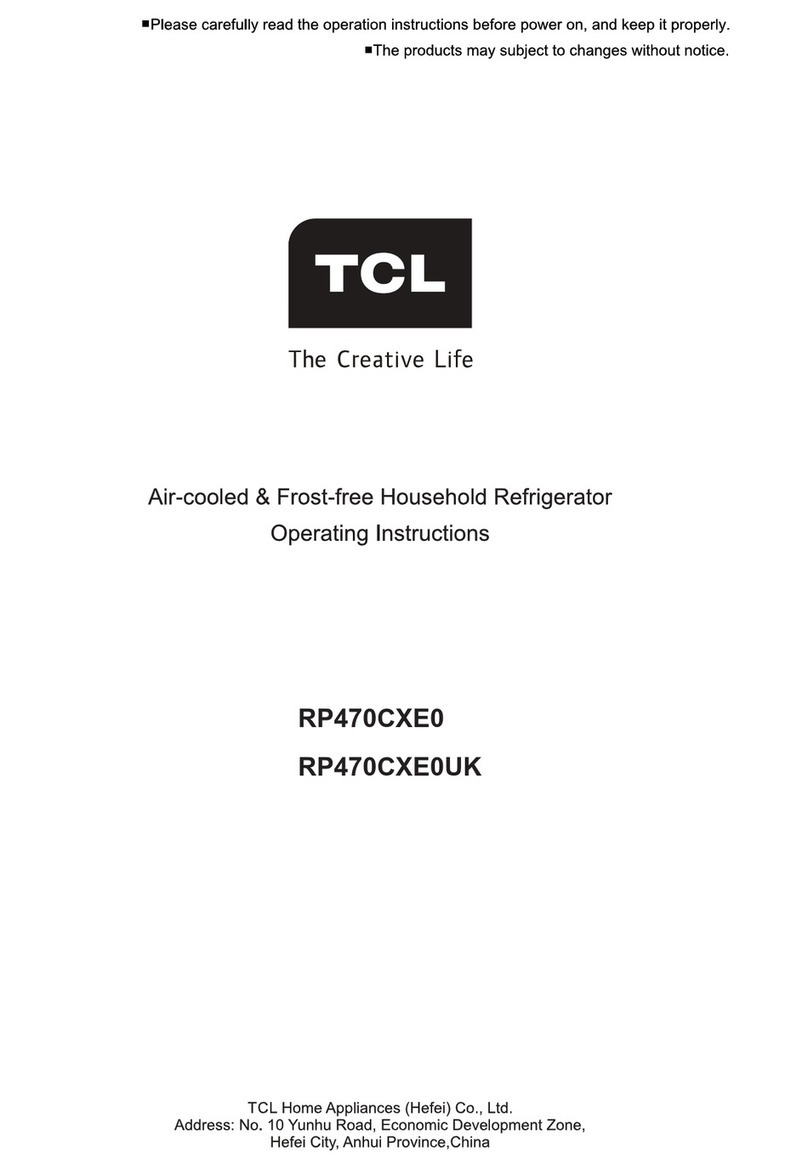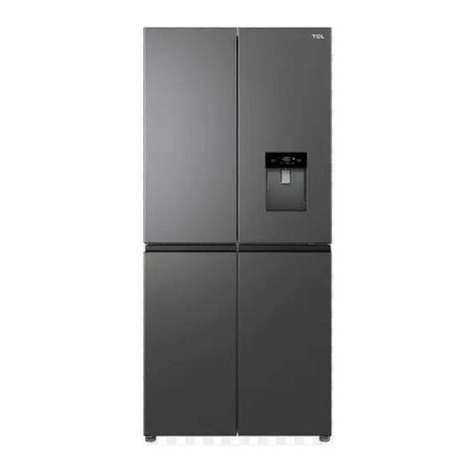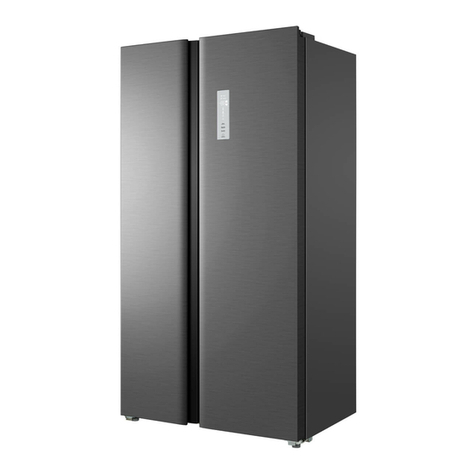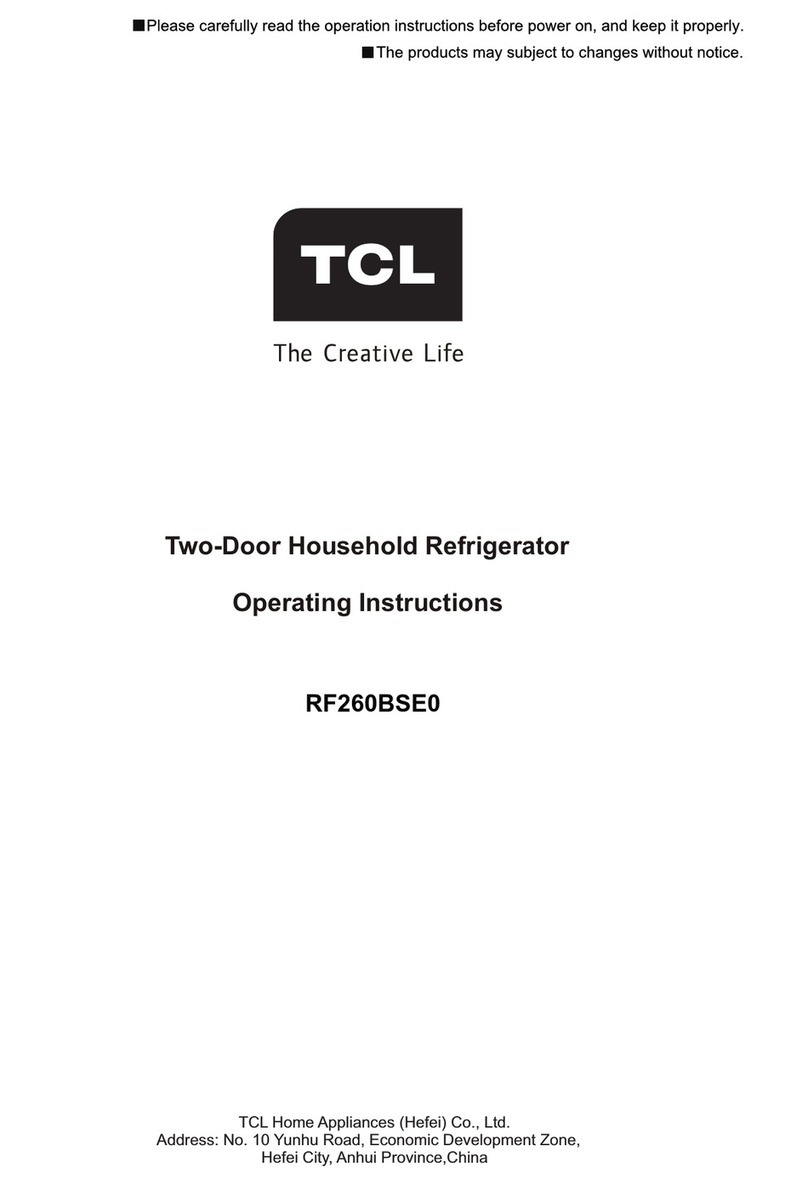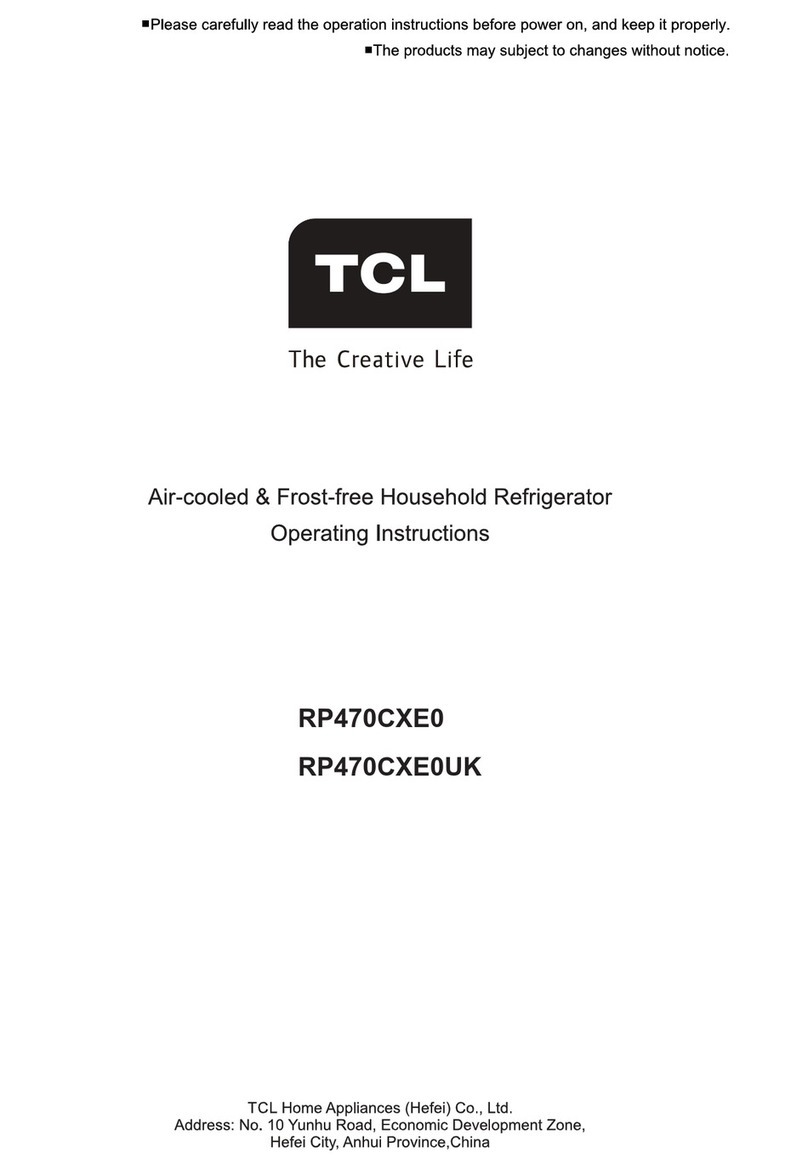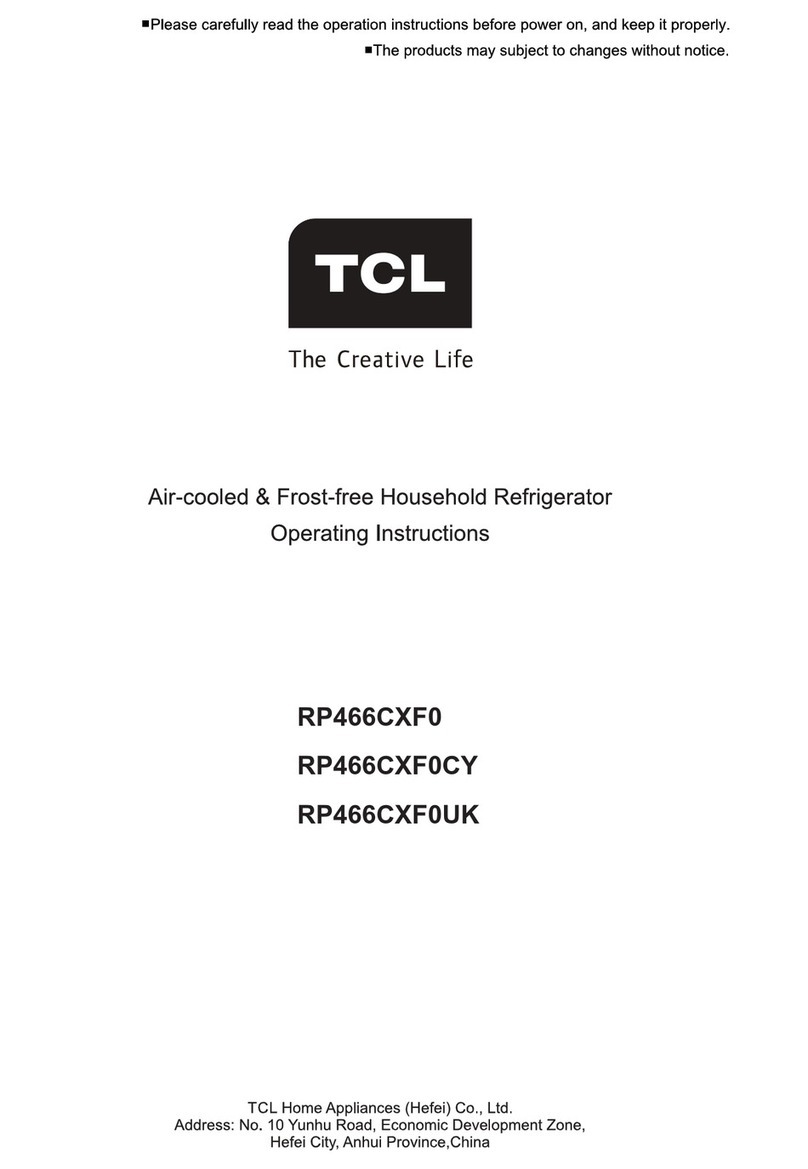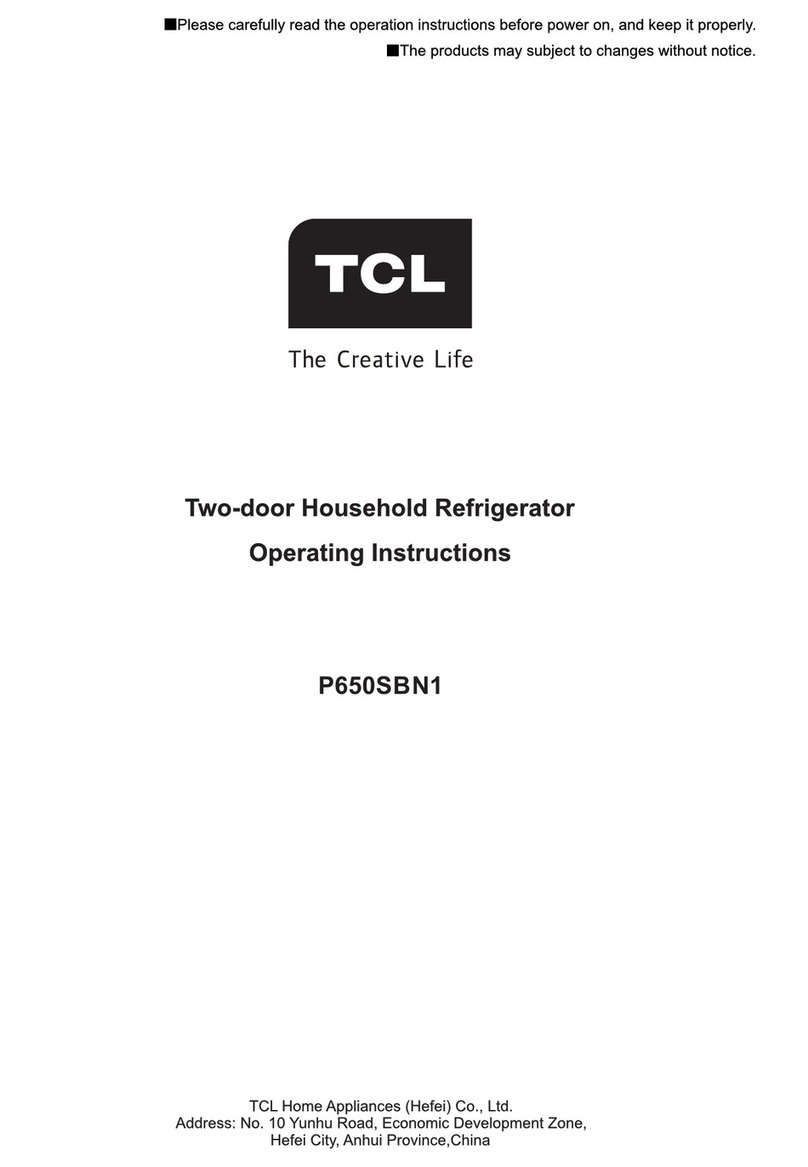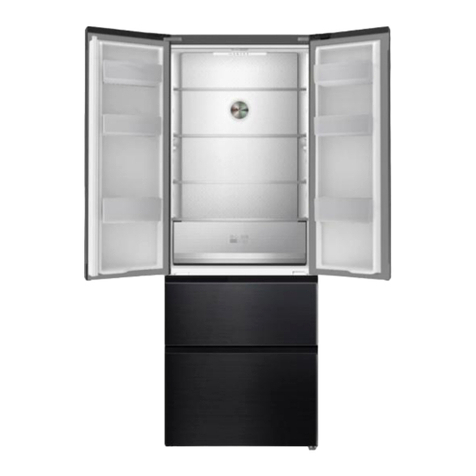
Thank you for buying TCL refrigerator. We hereby express our thanks.
Welcome to use TCL refrigerator. We will do our best to provide you with
quality service.
1. This appliance is not intended for use by persons (including children) with reduced
physical, sensory or mental capabilities, or lack of experience and knowledge, unless they
have been given supervision or instruction concerning use of the appliance by a person
responsible for their safety. Children should be supervised to ensure that they do not play
with the appliance.
2. If the supply cord is damaged, it must be replaced by the manufacturer, its service agent
or similarly qualified persons in order to avoid a hazard.
3. This appliance can be used by children aged from 8 years and above and persons with
reduced physical, sensory or mental capabilities or lack of experience and knowledge if
they have been given supervision or instruction concerning use of the appliance in a safe
way and understand the hazards involved. Children shall not play with the appliance.
Cleaning and user maintenance shall not be made by children without supervision.
4. WARNING: Keep ventilation openings, in the appliance enclosure or in the built-in
structure, clear of obstruction.
5. WARNING: Do not use mechanical devices or other means to accelerate the defrosting
process, other than those recommended by the manufacturer.
6. WARNING: Do not damage the refrigerant circuit.
7. WARNING: Do not use electrical appliances inside the food storage compartments of
the appliance, unless they are of the type recommended by the manufacturer.
8. Do not store explosive substances such as aerosol cans with a flammable propellant in
this appliance.
9. This appliance is intended to be used in household and similar applications such as
–Staff kitchen areas in shops, offices and other working environments;
–Farm houses and by clients in hotels, motels and other residential type environments;
–Bed and breakfast type environments;
–Catering and similar non-retail applications.
Contents
Safety instructions ....................................................................................................P2
Product introduction .................................................................................................P5
Handling and placement ..........................................................................................P6
Preparations prior to use..........................................................................................P7
Operation keys ..........................................................................................................P7
Temperature regulation ......................................................................................P7
Food storage ........................................................................................................P8
Defrost ..................................................................................................................P8
Self-induced temperature compensation.........................................................P8
Ice-making............................................................................................................P8
Disassembly and assembly method of accessory...........................................P9
Care and maintenance .............................................................................................P9
Failure analysis .........................................................................................................P10
Non-failure .................................................................................................................P10
Technical parameter and packing list .....................................................................P11
EN
